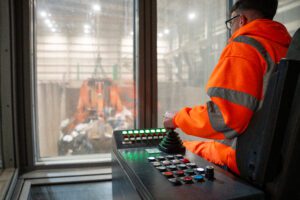During the Christmas break, Defra published its residual waste capacity note, which concluded that there is only a limited need for the development of further energy recovery facilities in England because the country is approaching a point where national residual waste treatment capacity is sufficient to manage municipal residual wastes (albeit with some regional variation to this central theme).
The report estimated that, in 2035, total energy recovery capacity will be around 18.8 Mt, while municipal residual waste arisings will total around 19.4Mt – although this is contingent upon the Collection and Packaging Reforms driving up recycling rates to anticipated levels.
The ESA supports this view of residual treatment capacity and our long-held position is that, while recovering energy and materials from waste left over after recycling is an important part of a circular economy, development of Energy-from-Waste (EfW) facilities must be carefully balanced against current and future capacity needs. It is in no one’s interest to deliver over-capacity, least of all energy-recovery investors and operators.
Defra’s capacity note does, however, make an allowance for continuing to landfill up to 10% of residual waste arisings. In accordance with our decarbonisation strategy and circular economy principles, the ESA believes that the UK must continue to reduce its reliance on landfill to near zero over the next two decades. Government must introduce mechanisms to support the reduction of waste volumes being sent to landfill, particularly once the Emissions Trading Scheme (ETS) is applied to our sector’s activities in 2026 (with full costs from 2028) which could, if poorly implemented, result in material falling down the waste hierarchy and back into landfill. Measures to mitigate this might include a ban on sending combustible (active) waste to landfill from 2028 and ensuring the Landfill Tax regime aligns with ETS costs.
In the announcement accompanying the capacity note, Defra stated that “new waste incinerators will only receive planning approval if they meet strict new local and environmental conditions”.
It is not yet clear how and when these conditions will come into force, but in practice, much of Government’s self-styled “crack down” represents a maintenance of the high-performing status quo – for example, through compliance with existing stringent regulatory standards, alongside efforts to maximise the efficiency of plants; create social value and economic opportunities; reduce waste volumes sent to landfill, and contribute to a more circular economy.
The announcement suggested that, once the new requirements come into force, EfW developers will also need to ensure new plants are built carbon-capture (CCUS) ready and demonstrate how the heat will be used.
In addition to increasing recycling rates and lowering overall waste arising, developing carbon capture and district heat networks across the UK’s EfW fleet will play a role supporting our sector’s target to decarbonise by 2040 and contribute to UK net-zero goals. We therefore welcome these new requirements for future EfW development, but building plants with this technical capability is the easy part. Developing a viable business model for CCS or Heat offtake, however, is going to require careful policy reform as outlined in our recent residual waste treatment options study with SLR Consulting.
Without further government intervention, development of CCS will not be financially viable for the majority of EfW facilities, even accounting for avoided ETS costs from 2028. Additionally, proposed government subsidy support for producing Sustainable Aviation Fuel (SAF) from residual waste could allow these facilities to offer the cheapest waste disposal route. This could divert waste from existing infrastructure despite the fact that SAF production via gasification and other processes has a low degree of demonstration at scale and is unlikely to outperform EfW with CCS on carbon emissions unless the waste has a very high organic content.
We therefore urge government to continue to engage with our sector and ensure that residual waste policy trajectory, including the ETS, supports out shared ambition to unlock carbon capture and heat networks across the UK’s EfW fleet.
ENDS




